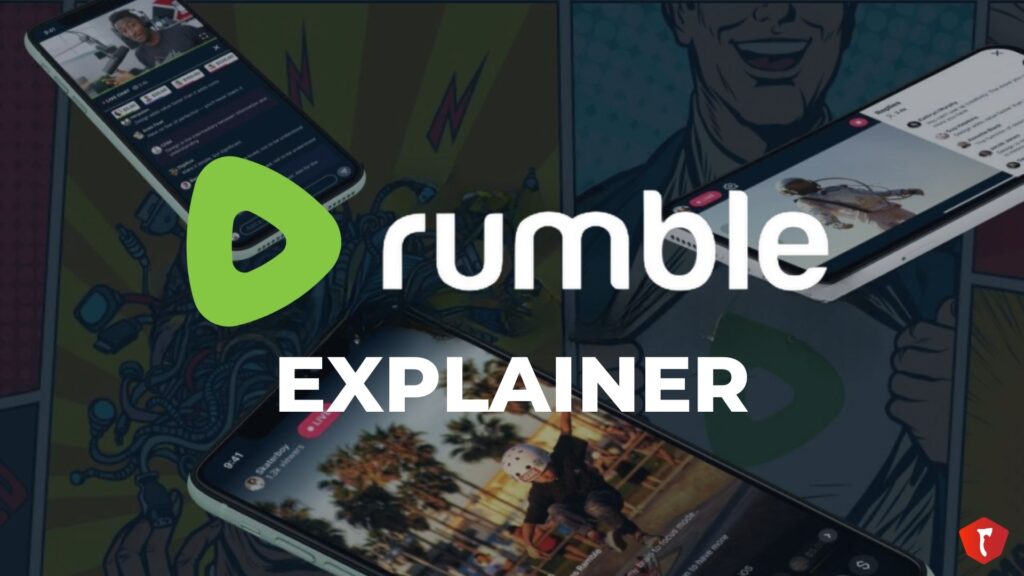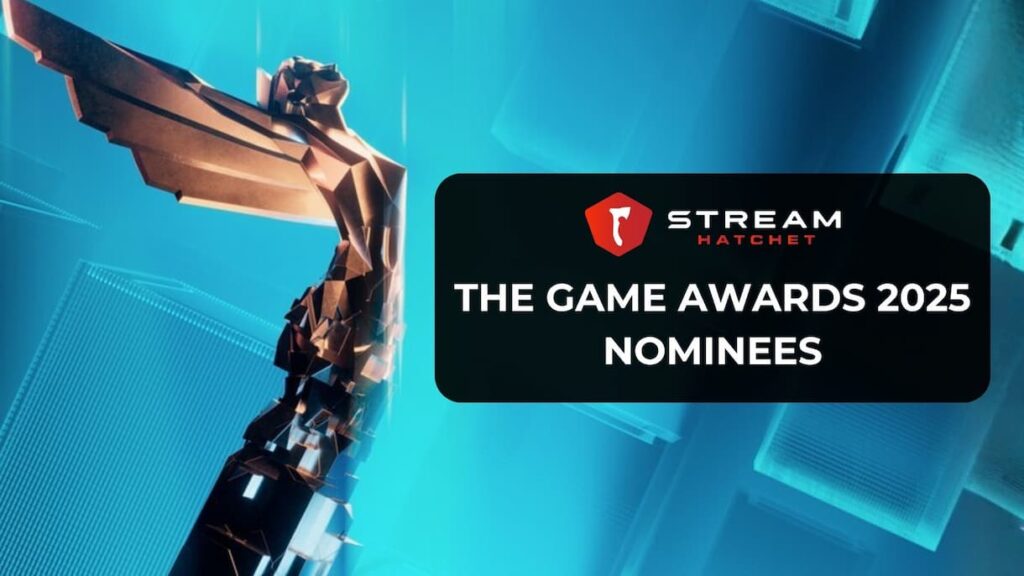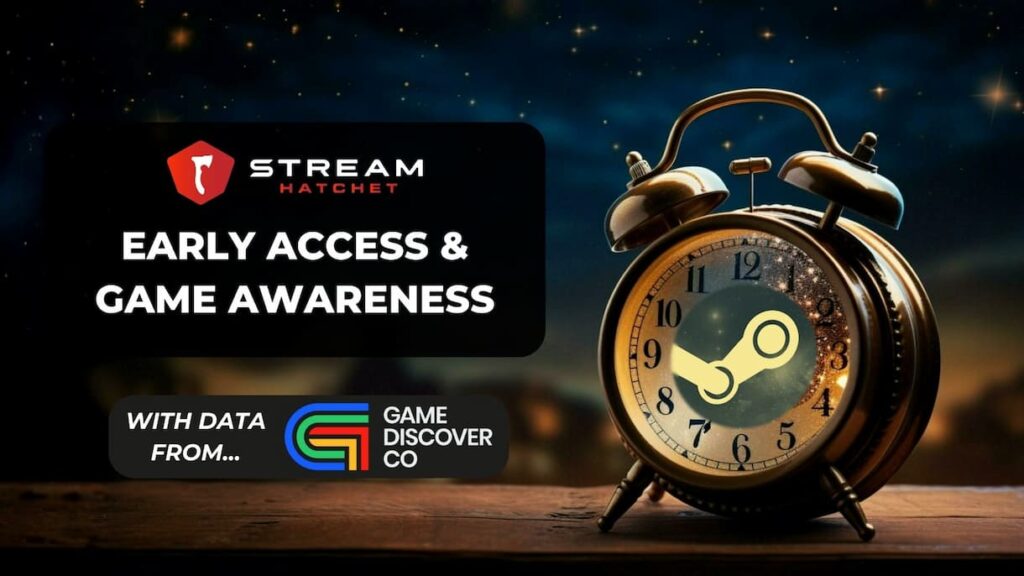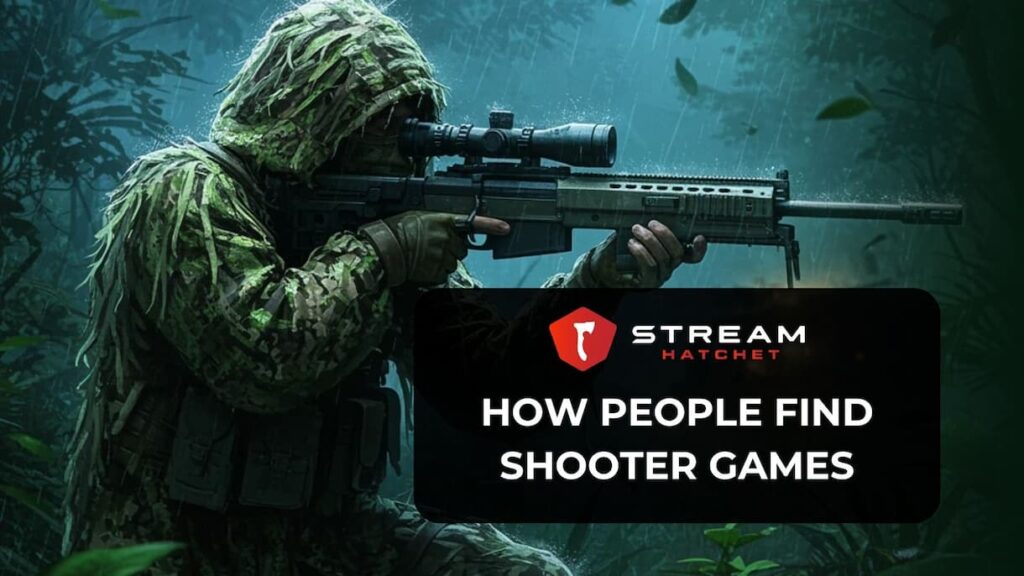Live streaming is typically associated with entertainment first and foremost, with gamers and IRL content creators captivating fans with outstanding gameplay and unreal experiences. However Rumble, one of the newer live streaming platforms in the space, is instead providing viewers with a censorship-free space to discuss political ideas.
The Toronto-based Rumble was founded by Canadian tech entrepreneur Chris Pavlovski back in 2013. For the first few years of its existence, Rumble mainly hosted viral videos of dogs and celebrities. But following the January 6th U.S. Capitol Riot, many viewers turned to alternative social media platforms like Rumble to get news and political commentary – especially after Parler was shut down due to its role in facilitating the organizers of the riot. As a result, Rumble’s user count jumped from 2M to 20M after the incident. Since then, Pavlovski has positioned Rumble as a neutral platform that is “immune to cancel culture”, providing marginalized voices with an alternative to the heavily-restricted Big Tech social media platforms.
To understand the growth of Rumble over the past few years, it’s worth explaining how the platform works – like Stream Hatchet’s previous article on SOOP. We’re looking at which Rumble streamers are bringing in the bulk of viewership, and what type of content viewers are tuning in for.
Rumble Draws the Bulk of its Viewership from Political Coverage
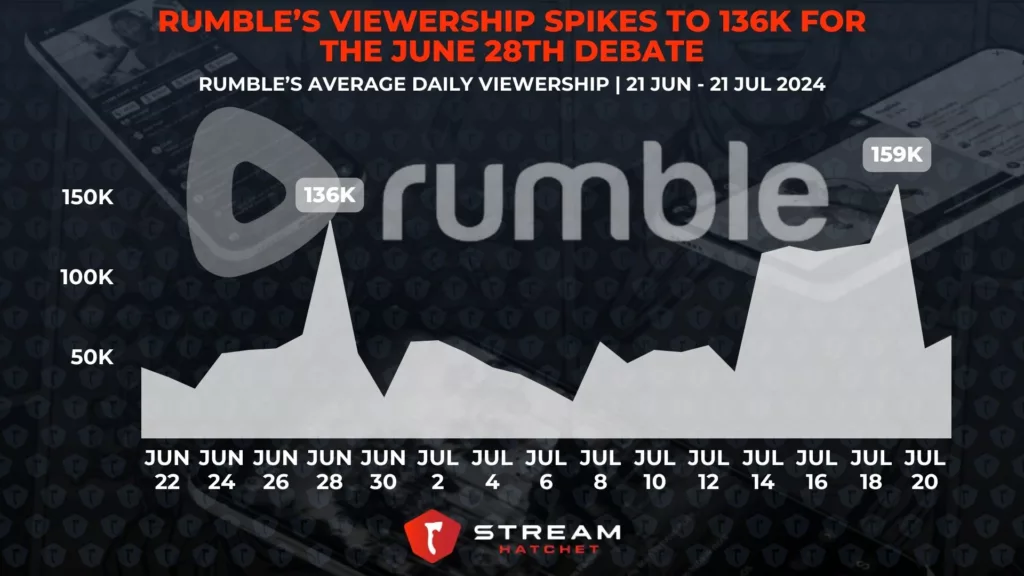
Over the last month in particular, Rumble has seen a resurgence in viewership. The highest daily viewership came on July 19th with 3.6M hours watched. No doubt this demand for Rumble stemmed from news around the assassination attempt on Trump and calls for Biden to step down as Democratic nominee. Additionally, Rumble saw a peak viewership of 136K on June 28th just after the first presidential debate.
It’s clear that the main driver for viewership on Rumble comes from political content. In the past week with the elections going on, daily viewership has more than doubled compared to previous months. Many of these viewers may be watching during work hours as well, as the weekends typically see a drop in viewership. As for the political persuasion of these viewers, the Pew Research Center reported in December 2022 that 76% of people getting their news from Rumble were Republicans or Republican-leaning.
This heavy skew in political opinion makes sense given Rumble’s social stances and partnerships over the past few years. Rumble inked a deal with Trump’s TRUTH Social network back in 2022, they partnered with the ROC for the second Republican presidential debate in 2023, and they’ve often spoken out against laws intended to curtail hate speech over free speech concerns – a view predominantly held by the right.
It’s worth noting, however, that Rumble is not exclusively dedicated to politics. In 2023, Rumble made strides into sports streaming by obtaining the rights to broadcast Street League Skateboarding – a skateboarding competition run by Thrill One, which is co-owned by former UFC CEO Lorenzo Fertitta. Rumble hopes to pursue more content outside of politics in the future, but for now politics is the drawcard for many viewers.
Rumble’s Top Streamers in 2024 Are Conservative Influencers
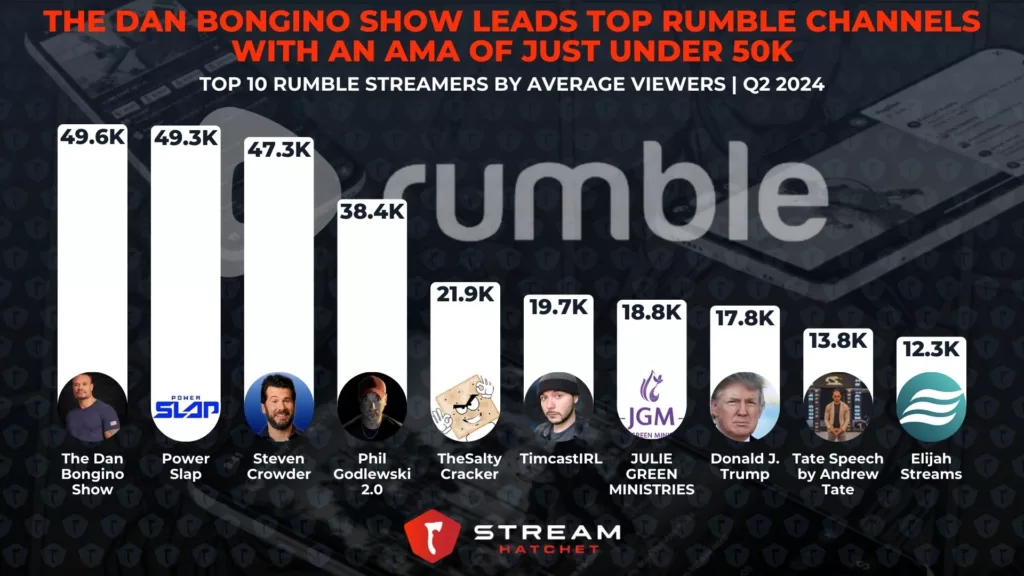
This tendency towards politics is reflected in the top streamers on Rumble. In Q2 of 2024, the most watched channel was The Dan Bongino Show with an average minute viewership (AMA) of 49.6K. Dan Bongino is a former Secret Service agent who took an equity stake in Rumble back in 2020. His coverage of politics in 2024 has been incredibly popular, rocketing him up to the 8th most watched streamer worldwide last month. Additionally, 9 of the top 10 Rumble streamers are political or politically-adjacent, the former including Steven Crowder and Sean Hannity while the latter includes streamers like Andrew Tate whose content is more socially-oriented.
Dan Bongino isn’t the only Rumble creator who has been paid to advocate for the platform. Journalist Glenn Greenwald was offered a six-figure sum to stream on Rumble, while Joe Rogan turned down a paid offer to exclusively stream on Rumble. As with many live streaming platforms, Individuals form the bedrock of what makes Rumble interesting. In fact, as of 2022, 78% of the top 200 most followed accounts were individuals.
Creators have a lot to gain by streaming on Rumble thanks to multiple routes for monetization. There are the traditional live-streaming monetization methods, such as partnership Programs and increased revenue based on viewership. But Rumble also offers some unique monetization alternatives. Rumble offers to pay creators to license their videos for use on sites like Yahoo!, MSN, and YouTube (with the licensing reach variable depending on the creators’ preference). Users can also enter “video challenges” hosted by Rumble, being rewarded with more money if they bring in the highest viewership. Both of these methods are meant to encourage competitive and creative ways of increasing demand.
A Stance Against Internet Censorship Leads to Controversy for Rumble
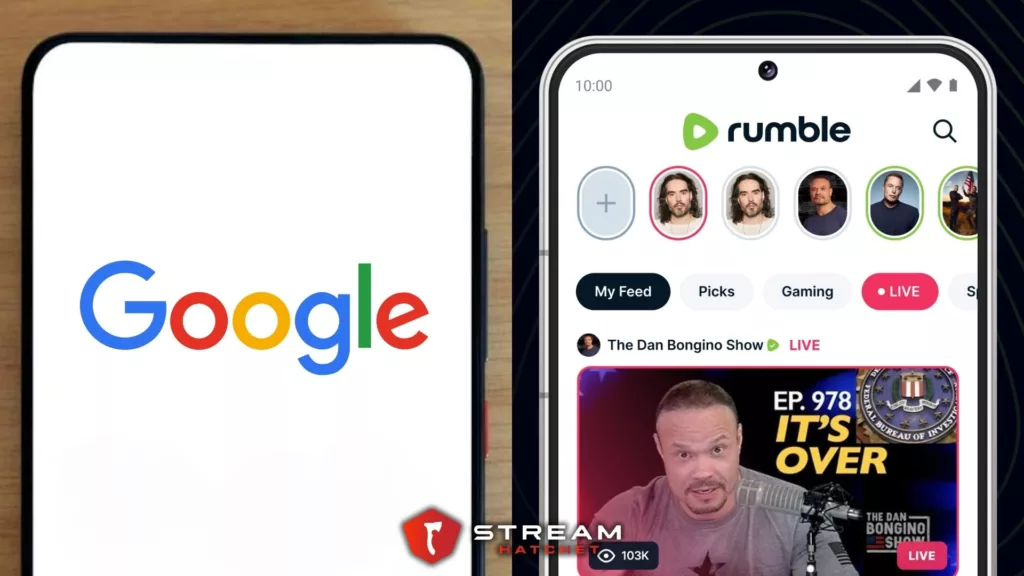
Naturally, taking an alternative approach has landed Rumble in its fair share of controversy. Chief among these is Rumble’s stance against Google and other Big Tech firms. In 2021, Rumble launched an antitrust lawsuit against Google which accused the company of preferencing videos from their own platforms (such as YouTube) over competitors’ videos in its search results. In the view of Pavlovski, this kind of dissent from the status quo has incited smear campaigns from mainstream media designed to denigrate the platform’s legitimacy. These include an investigation by the United States Securities and Exchange Commission (which was later thrown out) and accusations of inflating their metrics by Culper Research.
Rumble also provides refuge to creators of content that is banned on other platforms, including perceived hate speech and information considered to be false or misleading by mainstream sources. This includes anti-vaccination discourse, which in the wake of COVID was banned on most social media platforms. It also includes Russian state media, the presence of which has gotten Rumble banned in France. Rumble is also banned in Brazil and, ironically, Russia, after refusing the Russian government’s own demands for censorship.
Beyond these many controversies, one thing remains clear: Rumble continues to corner the market on political free speech in live streaming. Pavlovski claims he wants Rumble to be neutral, and his efforts to diversify into other content support this idea. But for now, advertisers with strong political standpoints are most likely to find success on the platform, promoting more heavily around the time of major political news to reach the highest concurrent viewer base. Stream Hatchet will be watching to see how Rumble adapts in the wake of the upcoming election.
To keep up to date with the latest platforms on live streaming, follow Stream Hatchet:
